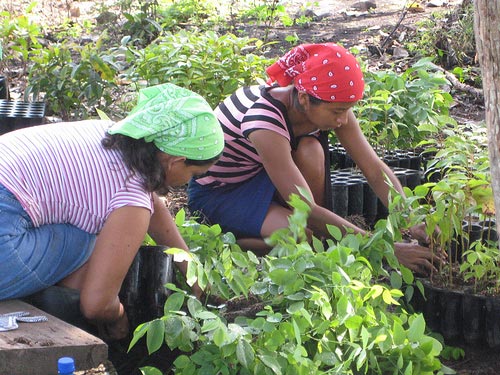Native Panama Tree Species Propagation Guide
/Cover artwork for the Native Species Propagation GuidePlanting Empowerment employees Liriano Opua, Yen Dogirama, and Mateo Johnson recently attended the release of the Smithsonian Tropical Research Institute’s Guide to Propagating 120 Native Tree Species of Panama. One of the co-authors of the book is Jose Deago, who guided us for several years in planting and maintaining our mixed native species forestry plots.
The book is a great resource for those interested in advancing the adoption native species forestry, and also those interested in investing in tropical woods. Producing native species saplings requires understanding and optimizing the variables of soil chemistry, watering, and shading. The right balance is required for the saplings to be transplanted successfully and achieve optimal growth.
We’re proud to be purchasing some of our native species saplings directly from the nursery of our Indigenous partner community Arimae. Through a grant from the UNDP-GEF Small Grants Programme, Liriano and Yen facilitated the construction of the nursery and the equipment to raise the saplings. Read the full case study about the project. They manage the nursery on behalf of the entire community and source most of the seed from the community’s forest preserve.
We used saplings produced in Arimae’s nursery for the first as part of our five hectare June 2012 planting (photos). While not scientifically conclusive, Liriano reports that the saplings produced in Arimae’s nursery have the highest survival and growth rates. Liriano and Yen left the conference with signed copies of the book, and are and be able to reference the book in the future.
Native Panama Tree Species Propagation Guide
(10MB, Spanish)








